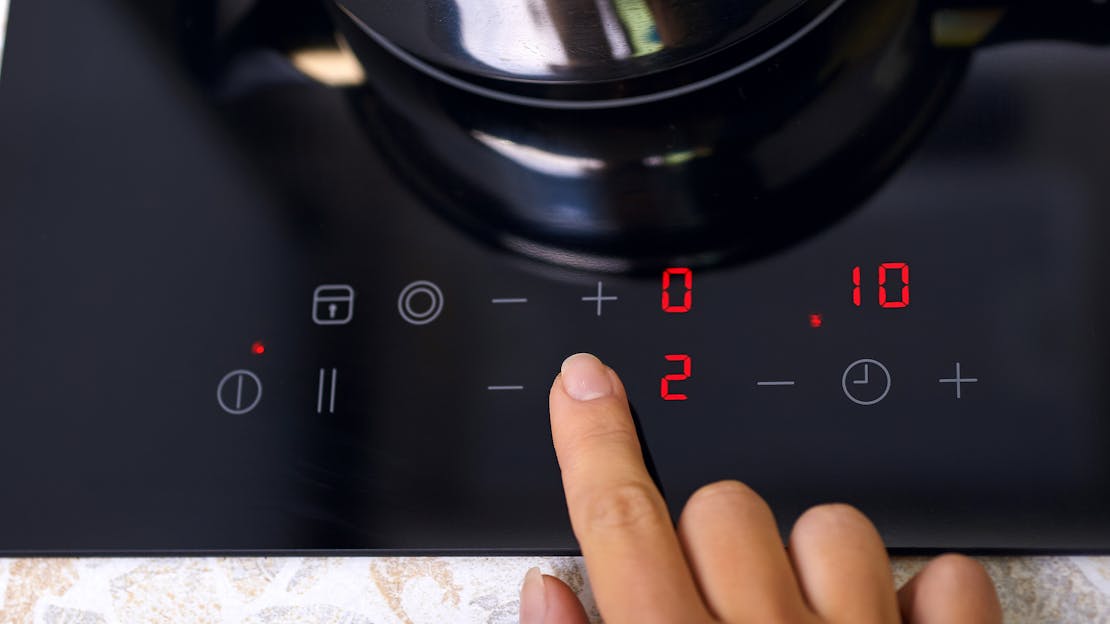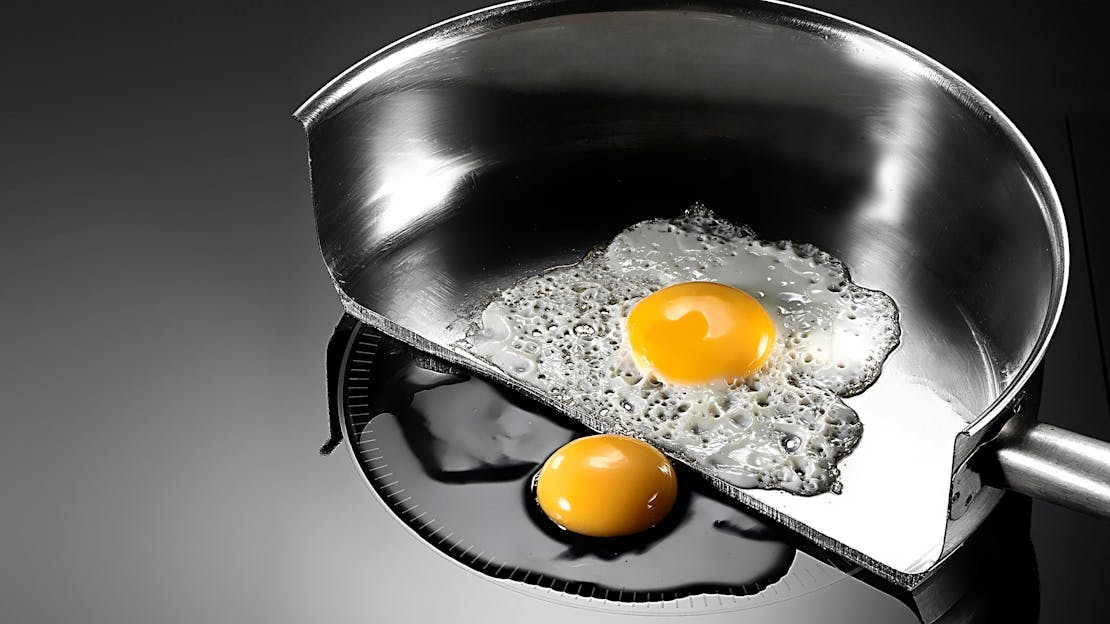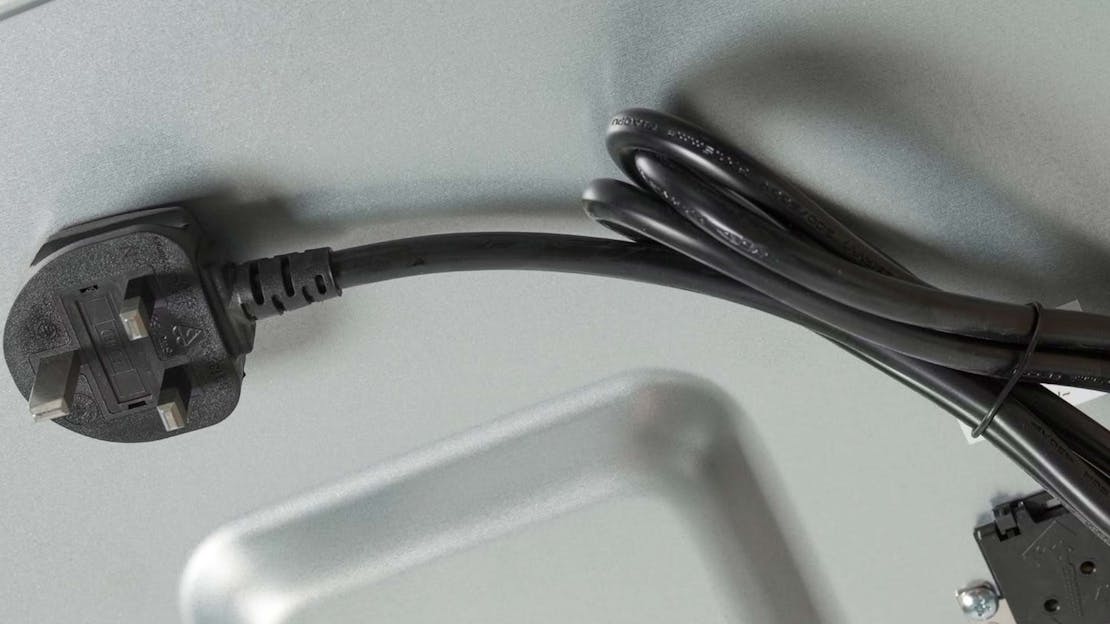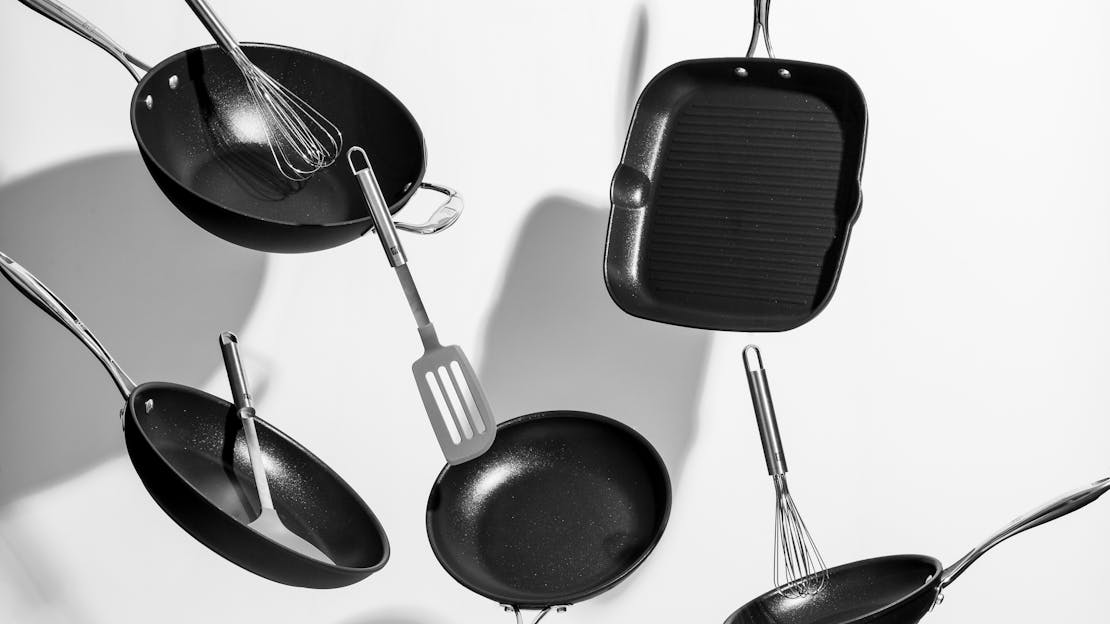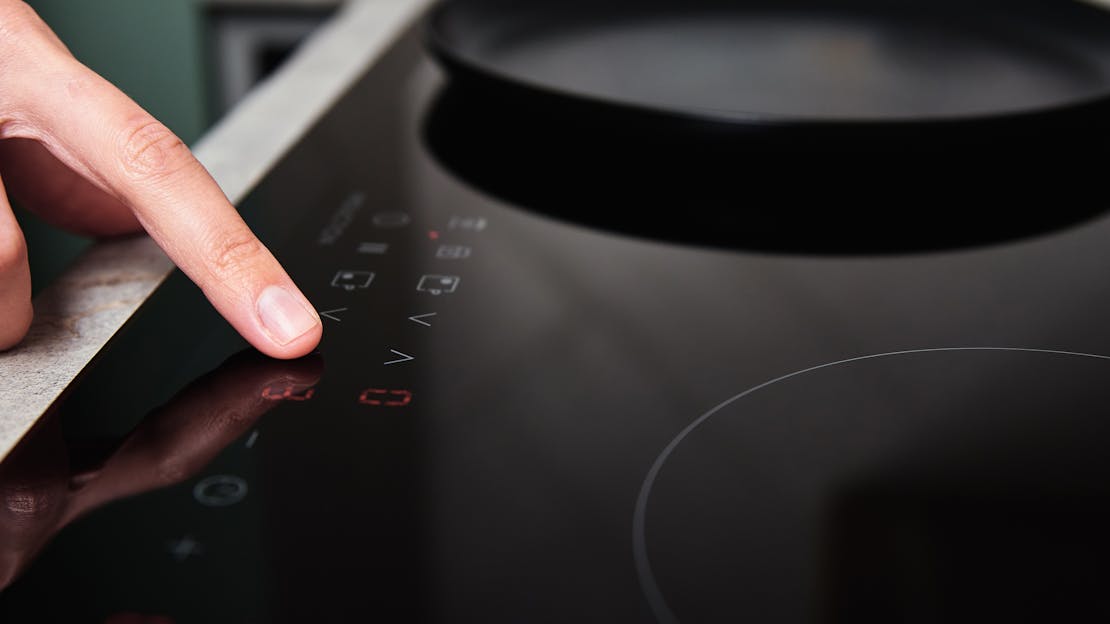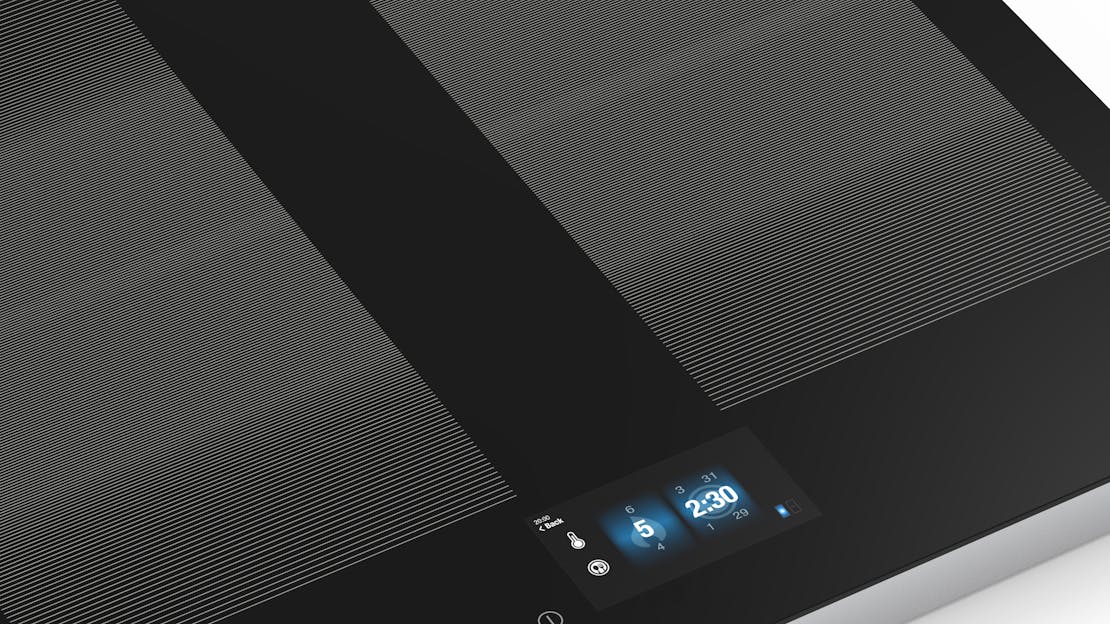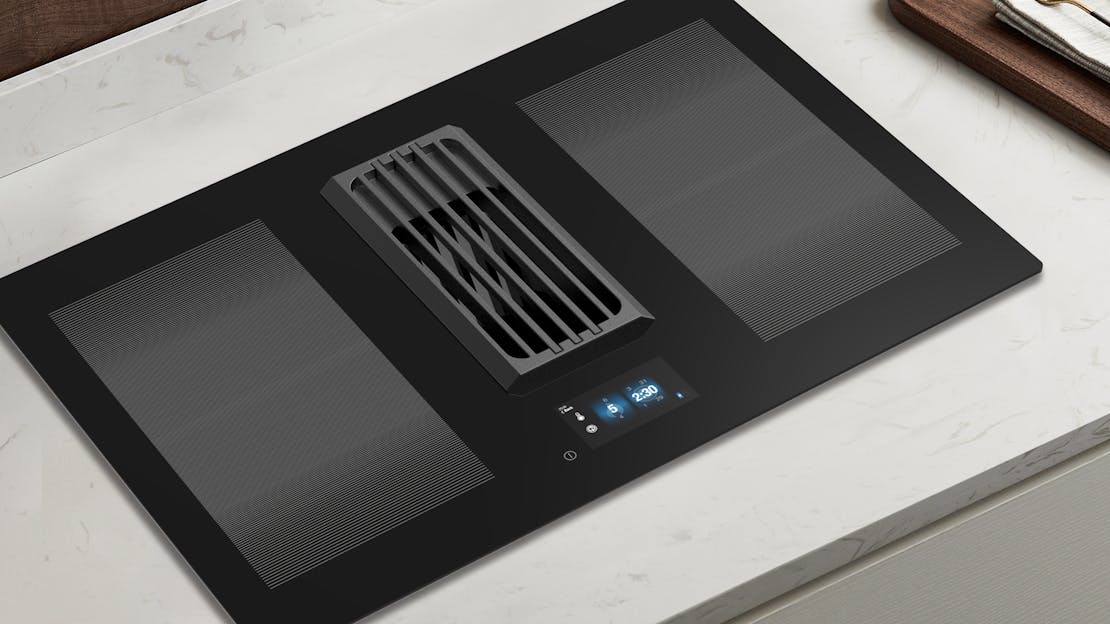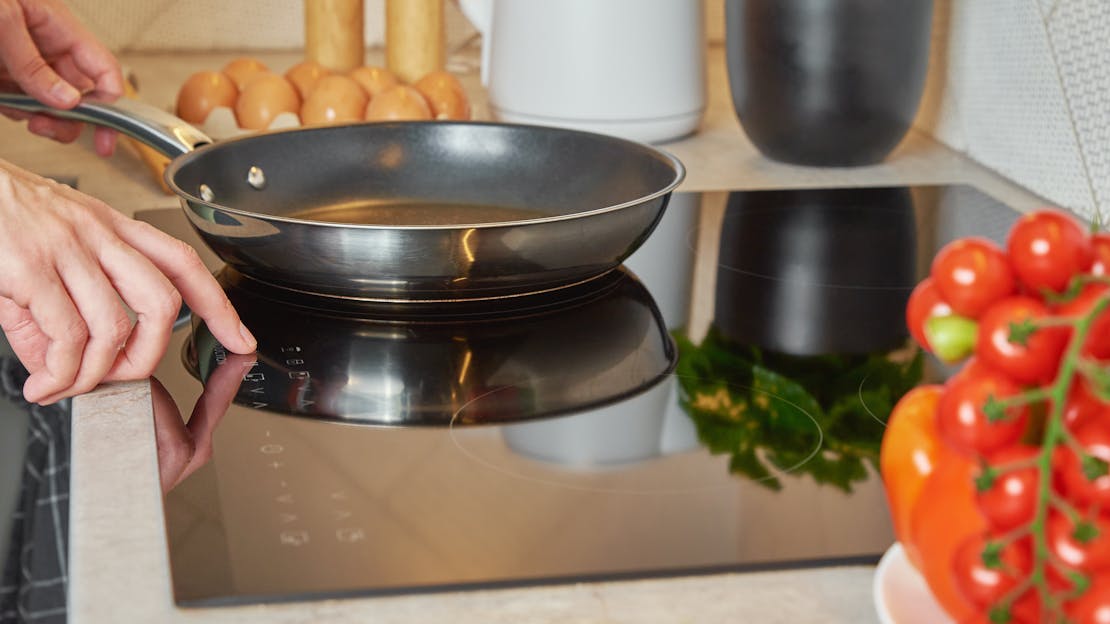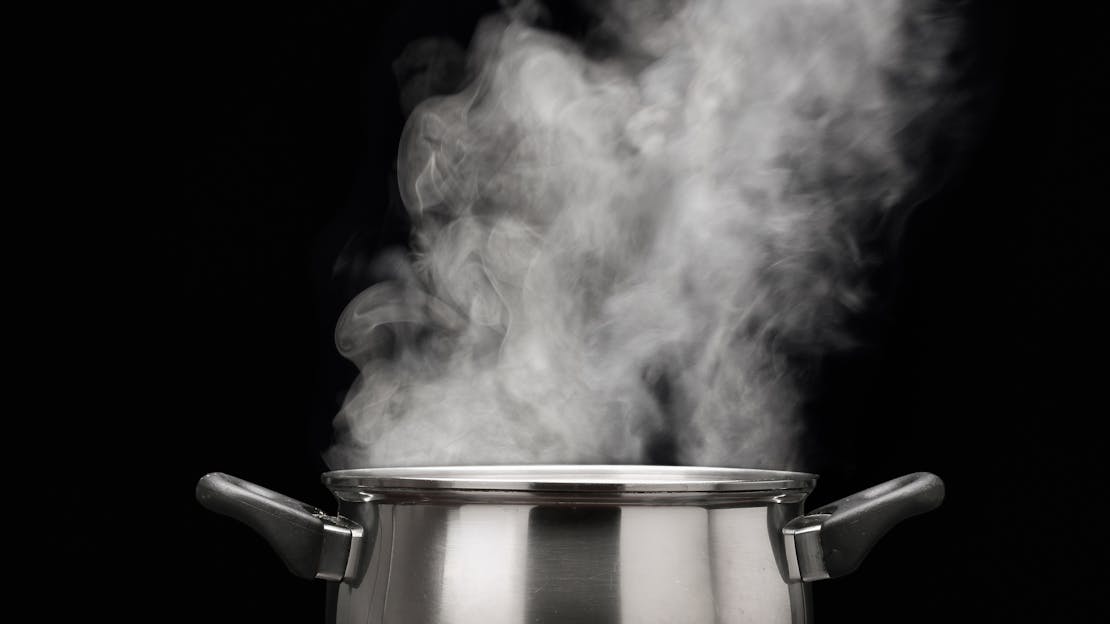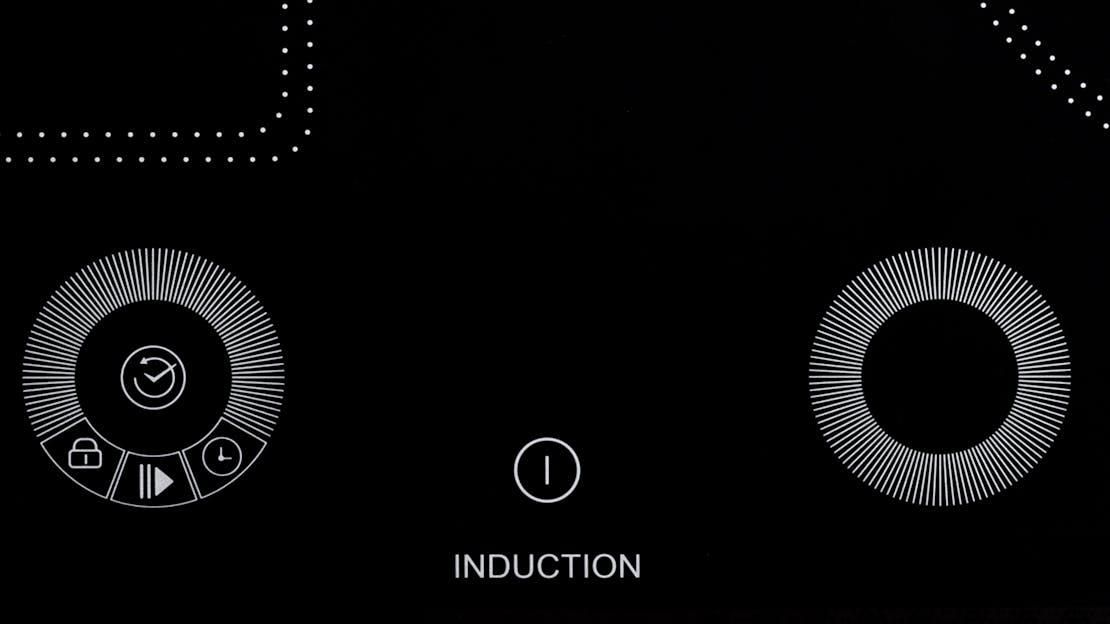
How to clean an induction hob
Cleaning an induction hob is essential to maintain its efficiency and appearance. Induction hobs are popular for their sleek design and ease of use, but they can become dirty and stained from spills, grease, and cooking residue. Follow these steps to clean your induction hob thoroughly:
Materials you'll need
- Soft cloth or sponge
- Washing-up liquid or induction hob cleaner
- Baking soda or specialised hob cleaner
- White vinegar
- Razor blade scraper (optional)
- Microfibre cloth or paper towels
- Soft, lint-free cloth for polishing (optional)
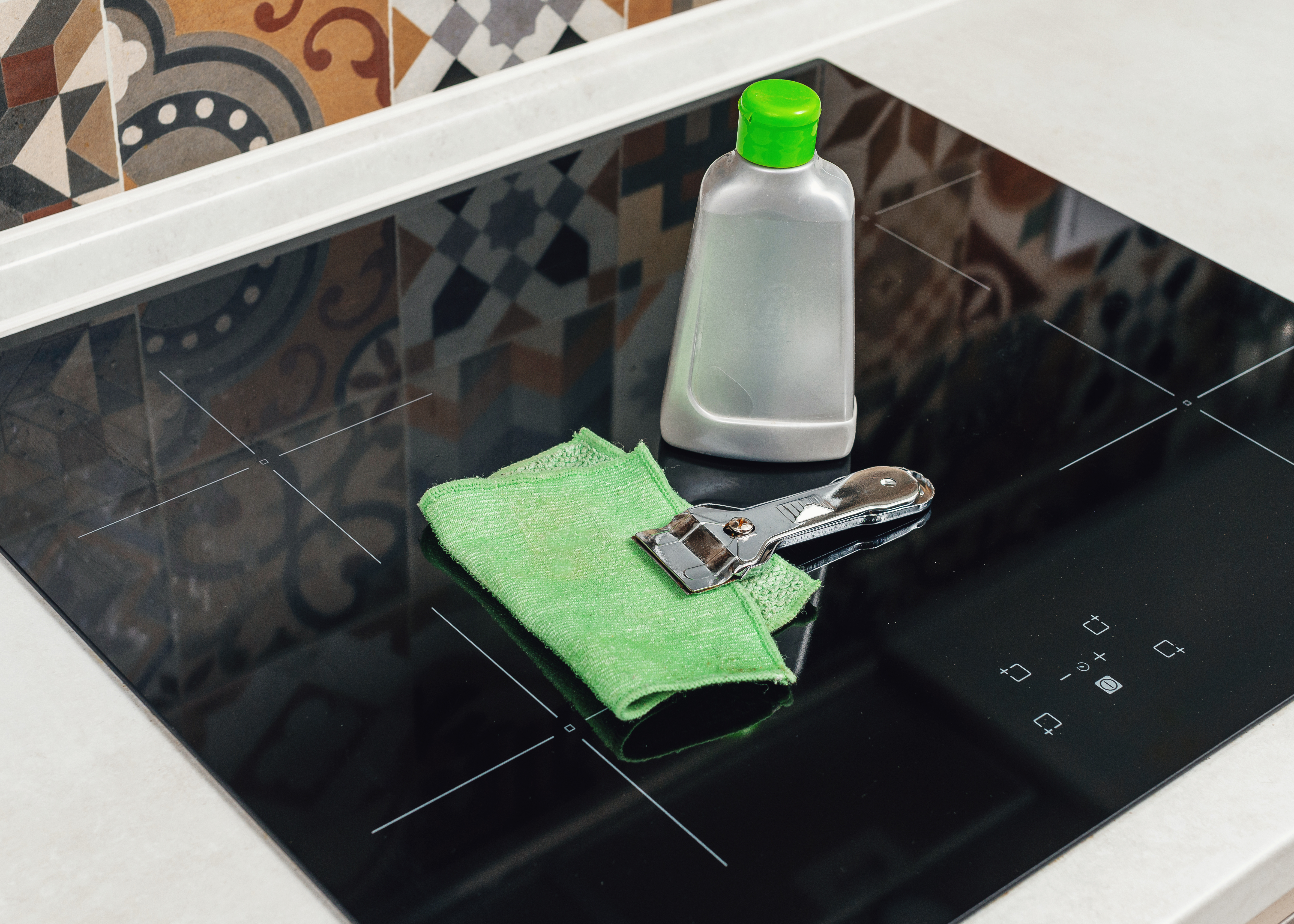
Safety precautions
- Before starting, ensure the induction hob is turned off and completely cool to the touch.
- Avoid using abrasive materials or harsh chemicals that may damage the surface.
Cleaning Steps
Basic Cleaning
- Remove loose debris: Wipe away any loose crumbs, food particles, or debris using a soft cloth or sponge.
- Soapy water: Fill a basin or bowl with warm water and add a few drops of mild washing-up liquid. Dip a soft cloth or sponge in the soapy water, wring it out, and wipe down the hob's surface.
- Rinse: Wipe the hob again with a clean, damp cloth to remove any soap residue.
Stubborn Stains and Burnt-On Residue
- Baking soda paste: Either create a paste by mixing baking soda with a small amount of water or use a specialised hob cleaner. Apply it to the affected areas on the hob.
- Let it sit: Allow it to sit on the stains for 10-15 minutes to loosen the residue.
- Scrub gently: Using a non-abrasive sponge or cloth, gently scrub the stained areas in a circular motion. Be cautious not to scratch the glass surface.
- Rinse thoroughly: Wipe the hob clean with a damp cloth to remove any residue.
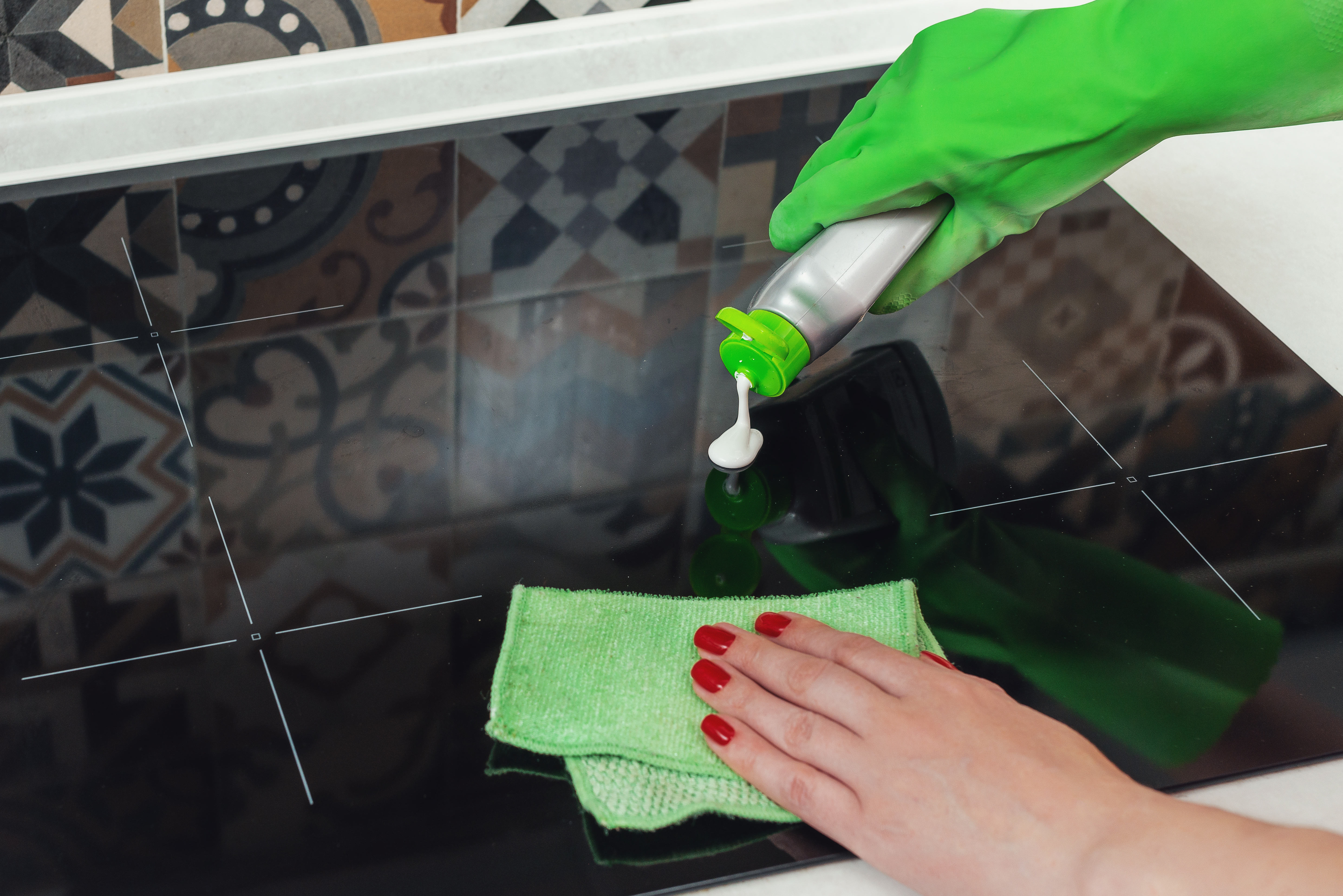
Dealing with Grease
- Vinegar solution: Mix equal parts of white vinegar and water in a spray bottle.
- Spray and wipe: Spritz the vinegar solution onto the greasy areas of the hob and let it sit for a few minutes. Then, wipe the surface clean with a damp cloth.
Removing Burnt-On Food
- If stubborn burnt-on food residue remains, you can use a razor blade scraper designed for glass surfaces. Hold the blade at a shallow angle and carefully scrape off the residue. Be cautious to avoid scratching the glass.
Final Polish
- To give your induction hob a shiny finish, use a clean, dry microfibre cloth or paper towels to gently buff the surface.
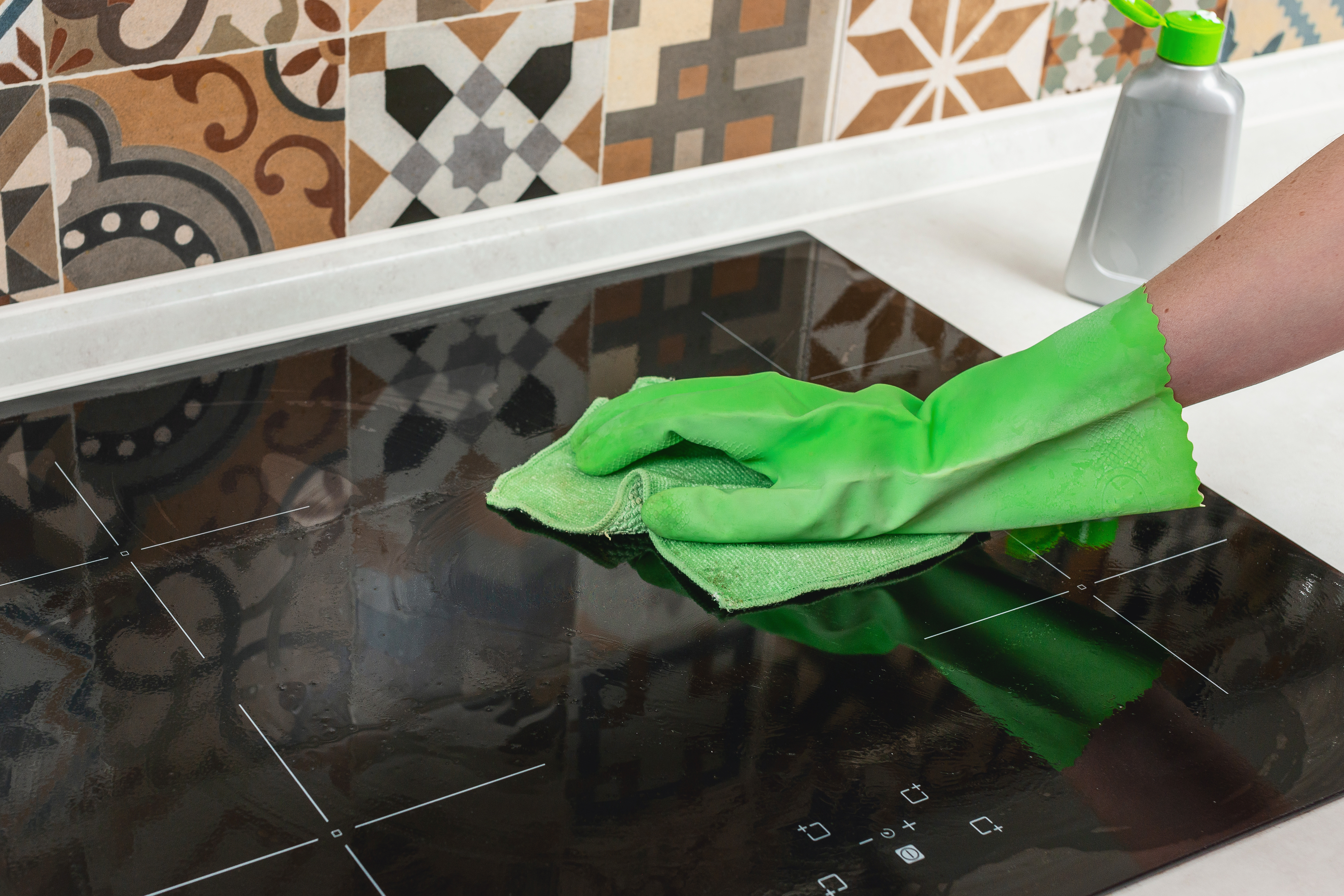
Additional Tips
- Regular Maintenance: Clean your induction hob after each use to prevent stubborn stains.
- Avoid Abrasive Materials: Refrain from using abrasive pads or harsh chemicals that can scratch or damage the glass surface.
- Use Induction-Friendly Cookware: Ensure your cookware is clean and suitable for induction hobs to prevent spills and stains.
- Protect Against Scratches: Place a silicone or felt mat under your cookware to prevent scratches or marks on the surface.
By following these steps and maintaining a regular cleaning routine, you can keep your induction hob looking clean and performing efficiently.
Frequently asked questions
What not to use to clean an induction hob?
- Abrasive scouring pads or abrasive cleaning materials, as they can scratch the glass surface.
- Harsh chemical cleaners or abrasive cleaners that can damage the induction hob's glass.
- Metal utensils or tools that could scratch or chip the glass.
- Excessive water that might seep into the electrical components; instead, use a damp cloth, not a soaking wet one.
How do I get burn marks off my induction hob?
- Create a paste with baking soda and water.
- Apply the paste to the burn marks and let it sit for 10-15 minutes.
- Gently scrub the marks with a non-abrasive sponge or cloth.
- Wipe the surface clean with a damp cloth to remove the paste and residue.
What damages an induction hob?
- Using improper cleaning materials, such as abrasive pads or harsh chemicals.
- Dropping heavy or hard objects on the glass surface.
- Cooking with cookware that is not compatible with induction hobs.
- Allowing sugary spills to burn onto the surface.
How do I keep my induction hob shiny?
- Regularly clean it with a soft cloth or sponge and mild washing-up liquid or an induction hob cleaner.
- Use a microfibre cloth or paper towels for a final polish.
- Avoid abrasive materials or harsh chemicals.
Can you use bicarbonate of soda to clean an induction hob?
Can I clean an induction hob with window cleaner?
Can you use washing-up liquid to clean an induction hob?
Can you use "The Pink Stuff" on induction hobs?
Can you put a tea towel on an induction hob?
Everything you need to know about Induction Hobs
Everything you need to know about Induction Hobs
Induction hobs offer rapid heating, precise control, and energy efficiency, revolutionizing cooking in the kitchen. Explore our articles for expert tips and advice to optimise your experience with induction hobs, ensuring efficient cooking and the best results every time.
If you're considering upgrading your kitchen hob, you may find yourself mulling over the fascinating world of induction hobs. As one of the leading manufacturers of all types of hobs, we're here to help navigate you through this often bewildering terrain. Welcome to the Ultimate Induction Hob Buying Guide!
Economical and well-designed, our induction hobs here at MyAppliances come in a range of sizes and are easy to install, too.
Induction hobs are generally meant to be hardwired into your electrical system rather than being plugged into a standard electrical socket. This is due to the fact that induction hobs require a higher amount of power to function correctly however there are exceptions.
Induction hobs are popular for their sleek design and ease of use, but they can become dirty and stained from spills, grease, and cooking residue. Follow this guide to clean your induction hob thoroughly.
When using an induction hob, it's essential to choose cookware that is compatible with this type of hob. Induction hobs work by generating an electromagnetic field that directly heats the cooking vessel, so the cookware must have magnetic properties for it to work effectively.
Explore the advantages of rapid heating, precise control, energy efficiency, and safety features as we demystify induction hobs and assist you in making an informed decision for your cooking needs.
A downdraft induction hob, often referred to as a vented hob is a versatile kitchen appliance that seamlessly integrates the benefits of both induction cooking and a built-in downdraft ventilation system.
Induction cooking has ushered in a culinary revolution with its sleek design and unparalleled efficiency. But have you ever wondered how it works? In this article, we'll demystify the science behind induction cooking, where electromagnetic forces take centre stage to create culinary magic. Join us on a journey into the fascinating world of induction cooking, as we explore its technology and the benefits that have made it a favourite among chefs and home cooks alike.
As with any advanced kitchen appliance, there are guidelines and precautions that must be followed to ensure both the safety of your induction hob and the longevity of your cooking adventures.
If you’re in the market for a new hob, it’s worth considering an induction hob. Induction hobs offer a range of benefits over traditional gas and electric hobs, from energy efficiency to precise temperature control. In this article, we’ll explore what induction hobs are, how they work, and why you should consider purchasing one for your kitchen.
Induction and ceramic hobs are both popular choices for modern cooking, but they operate in fundamentally different ways. Here's a detailed guide covering the differences between the two.
In this article, we explore some essential tips to help you reduce condensation and optimise your induction cooking experience.
Induction hobs have gained popularity for their energy efficiency and precise temperature control. In this FAQ, we'll discuss how induction hobs work, their advantages, cleaning and maintenance tips, and why they might be the perfect choice for your kitchen.

